I. The Alchemical Opus of Astrology
Alchemy is the gentle acceleration of growth through the use of the fire of nature.
—Paracelsus
Astrology has an alchemical opus, a work in common with psychology and medicine. In order for astrology to realize its therapeutic function, it needs a language that captures the imagination of its therapeutic. Alchemy is the language of medical and psychological astrology. Alchemical language is common to all therapies because “alchemical language is a mode of therapy; it is itself therapeutic”.1 Alchemy is the universal articulation, the nature and the process. Alchemy enlivens theory into practice, practice into art.
“Alchemy” is related to the Egyptian kēme, meaning “black earth”. In the Sanskrit language, astrology is known as jyotiṣa, meaning “light”. Alchemy and astrology are concerned with the play of light and darkness. Light is fire, the prima materia of Heaven and Earth. Fire is the alchemical fuse, the tapas of transformation.
In astrology, the natal image is prima materia, an original substance to be rendered and refined in the fire of life. Astrology bears the tension of determinism and free will, inheritance and individuation, character and calling. Fire is the only determination burning between the space of opposites. Our endowment is an archetypal image, awaiting transformation.
Alchemy is the fire of the gods. The nine planets are alchemical images; archetypes of transformation. “Each of the major metals corresponds with one of the seven planetary bodies that influence the soul by means of their exhalations, the pneuma, breath or inspiration, that give specific qualities to the work”.2 Sun is gold, agni, celestial fire, vital impetus, creative principle, life-fire, coagulation, citrinitas. Moon is silver, soma, rasa, essence, substance, reflection, distillation. Mars is iron, pitta, ministerial fire, separation, rubedo. Mercury is quicksilver, water, buddhi, discriminative intelligence, fermentation. Jupiter is tin, guru, wood, vertical growth, horizontal expansion, dissolution. Venus is copper, śukra, white essence, seminal seed, metal, conjunction, albedo. Saturn is lead, shani, earth, heavy, death, calcination, nigredo.
These seven visible planets give astrology its alchemical foundation, but its magnum opus is the two invisible planets—the north and south nodes of the Moon. “Node” comes from the Latin nodus, meaning “knot”. In mathematics, a node is the point at which a curve intersects itself. In astronomy, a node represents the intersection between a planetary orbit and the plane of the ecliptic. In alchemy, a node is a substantial knot, a metallic inertia awaiting activation.
Therefore, the lunar nodes depict the knots of the psyche. Rahu is north node; the spirit of evolution; eros calling from eternity; nigredo of the soul. Ketu is south node; the substance of ancestry; inheritance; karmic treasure; albedo of the spirit. Their infusion is a blue flame of finality; a unio mentalis; materia medica of the psyche; pharmakon of the soul, refined and realized.
II. Mythology and Alchemy: Demon, Daimon, and Node
The lunar nodes are an archetypal image of the psyche as an alchemical process. In myth, the lunar nodes are depicted as a serpent (or dragon) who has been severed in half. In the Purānic myth of “churning the ocean” (samudra manthana), Vishnu churns the ocean of milk into the nectar of immortality (amṛta) and offers it to the gods. The demon svarabhānu disguises himself as a god, so as to receive the nectar bestowed upon the gods by Vishnu. A drop of nectar fell upon the demon’s lips before Vishnu recognized its deception. In retribution, Vishnu severed svarabhānu in half, immortalizing the demon in division.
The churning of the ocean is an alchemical portrayal. Vishnu is the divine fire (agni) transforming the ocean of milk (soma) into spiritual nectar (amṛta). Churning carries the spirit of fire—it purifies, lightens, and refines. When milk is churned, it is refined into butter. When butter is boiled, it becomes ghee. Churning is the image of circumambulation and circulation. The substance to be transformed lives in the middle and is continually encircled, conducted and changed.
Severance is the image of desire and dissolution, of separation and conjunction. Svarabhānu is desirous of divine nectar, and deceives to attain it. “Alchemy starts in desire; desire needs direction”.3 Svarabhānu is a Promethean archetype, stealer of fire from the gods. In severance, svarabhānu attains negation, and “negation brings fluidity”.4 The negation of svarabhānu frees the libido to discover its direction. Samudra manthana becomes solve et coagula. Severance is decapitation, the separation of mind from body. Decapitation is the separatio that liberates the psyche. Svarabhānu means “radiant splendor”. In severance, svarabhānu becomes Rahu and Ketu, shadow planets and eclipsing nodes. Decapitation makes darkness.
“What can release the soul from its somber identification?” This is the question posed in every analysis, and posed during the nigredo moments of every life. The alchemist answer: decapitation. According to Jung, the black spirit is to be beheaded, an act that separates understanding from its identification with suffering. Because, “in the nigredo the brain turns black,” decapitation “emancipates that cogitatio.”5
The one becomes two. “Blackness remains, but the distinction from head and body creates a two, while suffering imprisons in singleness”.6 In separation, “the mind may begin to recognize what the body only senses”.7 Decapitation is an allowance of suffering, a submission to dualism that ultimately unifies. Decapitation is the necessary separatio that precedes coniunctio. From separation, comes conjunction. “Decapitation allows the mind to cogitate the darkness”.8 Severance is the death that enables rebirth.
Rahu and Ketu embody the image of division. An alchemical view would transform their isolation into unity and their division into wholeness. Wholeness becomes the metaphor of healing and the image of integration. Integration is not merely a union of opposites, but a sublimation of opposites in their intrinsic nature. The lunar nodes are not the fated opposites, but alchemical separations whose mixture can only fuse in the fire of destiny. The demon dissolves and the daimon coagulates.
Rahu and Ketu become visible in the form of eclipses. Therefore, eclipses represent the phenomenology of the psyche, the omens of our alchemy. As obscurations of the two luminaries, eclipses have been regarded not as omens, but ominous signs; not as opportunities, but provocations. In Tibetan medicine, planets and spirits are both regarded as demonological influences with the power to provoke and possess—they are potential etiological factors, or “provocations” (gdön). For this reason, therapies that puncture the skin are contraindicated during eclipses. (Other therapies are not forbidden but strongly discouraged, because their efficacy is “obscured” during an eclipse.) In India, bathing is contraindicated during an eclipse, because bathing opens the pores of the skin, allowing the “pathogen” to enter the body. Eclipses are seen as pathogenic factors that one should avoid exposing oneself to in the same way that one avoids a cold wind.
Alchemy gives psychological value to darkness and light. Therefore, the lunar nodes become valuable when we interpret them alchemically. When the lunar nodes are seen as demon, they possess us, seizing our destiny from us. When the lunar nodes are seen as daimon, they empower us, becoming guardians of our destiny. In alchemy, our weaknesses become our strengths, not merely our sicknesses. The mythology of the lunar nodes illustrates the need to pathologize, to restore the “tragic sense of life”, to render a therapeutic that transforms the rudiments of life into a poiesis of the soul.
The root of eclipse is the Greek ekleipein, literally “to fail to appear”. The shadow is not merely without light, it is without consciousness. It asks to be seen again—re-visioned and re-cognized. We are fated by all that we exclude from consciousness and we suffer in isolation. If we speak of the lunar nodes with an alchemical tongue, then they become a psychological phenomenon and a therapeutic encounter. Rahu and Ketu are no longer the demons that possess our fate, but the daimon that delivers our destiny.
III. South Node: Ancestral Treasure, Alchemical Substance
Ketu, the south node of the Moon, represents the full spectrum of ancestral and karmic inheritance. In Daoist alchemy, the psychic constitution is xing, the innate nature, the prima materia, the fatum that becomes the destinata. The dragon is said to guard an alchemical treasure, a philosopher’s stone and wish-fulfilling jewel. Dragon is related to the Sanskrit root drś-, meaning “to see”. The dragon swallows the Sun to coagulate its inner fire, eclipses to re-vision, separates to rejoin, disappears to be born again. Ketu is the tail of the dragon, body without head, eros without psyche. Ketu has no sight, and no destiny. Ketu is character, not calling. Character is salt and suffering; calling is light in darkness. The dragon guards the gate of our destiny, ancestral treasure in tooth and claw. The past is our secret image, the prima materia of the psyche. The energy of our ancestors is the essence of our life-force, the family jewel, the karmic treasure. Therefore, the ancestral treasure is not only a notion, it is a substance; it is not only guarded, it awaits transformation.
Daoist alchemy pictures the human being as an alchemical vessel, containing and separating, standing between Heaven and Earth, with three treasures in its burning spaces. The alchemical body has its centers and seas, where essences are churned into elixirs. The vital center of the body is located between the “moving spaces” of the Kidneys. The vital center is known as mingmen, “the gate of life-destiny”, the embodied center of character and calling. The source-energy of the whole body is burns in the mingmen. Mingmen is the fire beneath the cauldron. Mingmen is the principle of transformation. Thus, the human body is not an entity, but a process, a unifier of opposition, a motion in tandem.
In Daoist alchemy, the “three treasures” of jing (essence), qi (energy), and shen (spirit) are alchemical substances transformed by the flame of destiny. Jing is the ancestral essence seated in the Kidneys and concentrated in the navel. The Kidneys store jing and the mingmen transforms it. Jing is the essence of our ancestors; soma; substance and treasure. Jing is divided into pre-natal and post-natal aspects: pre-natal jing is ancestral, inherited, constitutional, the province of Ketu; post-natal jing is individual, acquired, conditional, the province of Rahu. Pre-natal jing is inherited from the vital essences of the parents; post-natal jing is acquired from food. Ketu is xing, the innate image; Rahu is ming, the heavenly mandate.
The three treasures are an alchemical idea, a fluid concept, able to change its shape in context and consciousness. The three treasures are forces, substances, densities, depths, stages, and origins. The three treasures are a spectrum of vitality that continually creates itself. Jing, qi, and shen circulate in the body in a circle of conductivity, known as the “microcosmic orbit”. The microcosmic orbit is formed by the arcs of two embryological vessels—the Conception Vessel (ren mai) and Governor Vessel (du mai). Ketu corresponds to the Governor Vessel, the spinal line, that which is behind us, the return of the soul to Heaven. Rahu corresponds to the Conception Vessel, the frontal line, the path of incarnation, the second birth, the infusion of heavenly mandate.
The dynamic of Rahu and Ketu is the circulatio, the movement between ancestry and individuation, the transformation of fate into destiny. Therefore, the acceptance of our inheritance—karmic, genetic, personal, and collective—is the work symbolized by the south node. There is no future without a present constellated by its past. Fated life means unconscious life, suffering and singleness, bland monotheism, an unlived body with a desolate psyche.
Through Ketu, we inherit weakness and wounds, strengths and cures. Ancestral wounds are simultaneously personal and impersonal. A wound is where the one becomes two. The wounds of the psyche are never truly healed, they remain potentials in separatio, awaiting the mysterious coniunctio. Ketu is the agency of our ancestral wounds, Rahu is the salt that ripens them. Trauma means “wound”. A wound is not merely a hurt, but an opportunity for opening. The wounds of the psyche need not be fissures, but vales in the psyche. Then history, experience, karma, and trauma leave the mummery of memory to come alive in alchemy.
The key to psychological healing is discovered in alchemical language. Astrology is an alchemical psychology, giving us the keys to character and calling, the visions of fate and destiny. By understanding the natal placement of Ketu, we gain insight into the nature and pattern of our karmic inheritance in personal, familial, collective, cultural, and historical terms. Ketu needs our conscious validation. What we fail to consciously validate is unconsciously projected, eclipsing our life. Alchemy is an esoteric image, a dynamic in which fate and destiny are constellated, not possessed. Destiny is discovered in the spirit of evolution, the creative instinct that moves us in a consciousness of the past that becomes the vision of our future.
IV. North Node: The Spirit of Evolution
Rahu is the north node of the Moon, the unseen image, hidden at the gate of life’s destiny. The north node is the progressive vision, the unknown mythos of the psyche, the eros guiding it to a new totality of being. The north node is not inherited, it is alchemically made, distilled from the ashes of the past. Through its agency, we are born again. “That the material itself asks to be refined, the raw wanting to be cooked, suggests an archetypal basis for the ideas of perfectibility, progress, and as well, evolution”.9
The lunar nodes are often interpreted as symbols of a linear process—first the south node, then the north node. However, we misunderstand their meaning when we place them merely in sequence. In truth, the lunar nodes represent a simultaneity, a mutual unfolding. Alchemy implies mutuality, melting, and mixture—where boundaries of distinction become fluid transparencies. The lunar nodes do not merely oppose each other, they blend into and become each other. The lunar nodes represent the bi-directional vectors of our life. We are at once reclaiming our past and pursuing our future, accepting our fate and envisioning destiny, embodying ancestors and becoming autonomous.
The influence of the lunar nodes marks the “second birth” that is associated with “mid life”. In the Jungian schema, human life is divided into four stages: childhood (0-12), youth (13-40), middle life (41-60), old age (60+). In Indian astrology, planetary energies are said to “mature” at specific ages: Jupiter at 16, Sun at 21, Moon at 24, Venus at 25, Mars at 27, Mercury at 32, Saturn at 36, Rahu at 42, and Ketu at 48. “Maturation” indicates ripeness, fruition, actualization—planets breathe the fullness of their life into the human vessel. If we align the Jungian and Indian schemas, then all the planetary maturations preceding Rahu and Ketu unfold during “youth”. The maturation of the lunar nodes marks the end of youth and the beginning of “mid-life”. The placing of nodal maturity within the forties validates the observation of mid-life as a period of crisis, the nigredo stage, the “dark night of the soul”.
Why does Rahu mature before Ketu? Ketu is usually seen as a foundational value that precedes Rahu. The maturation of Rahu before Ketu is an apparent reversal that reveals another layer of meaning. Rahu is the agency of transformation, the nigredo, the black before the white. Ketu is the agency of liberation, the albedo, white illumination after a period of darkness. In Indian astrology, Ketu is described as the mokṣa-kāraka, the “signifier of spiritual liberation”. Since Ketu represents the karmic spectrum of our experience, it becomes the meridian of their release. The dark night of the soul is the essential passage leading to our psychic liberation. Thus, the forties become the alchemical decade of our lives, where mutual opposition is cooked in a crucible and the psyche is impregnated with the eros of destiny.
We can also divide our life between the nodes—where ages 0-40 correspond to Ketu and 41+ corresponds to Rahu. According to this measure, our libido primarily resides in the south node during the first half of life and is concentrated in the north node during the second half of life. When the north node matures at 42, our early-life is thrown in thanatos, until eros re-awakens the desire and direction of our libido. A condition of wholeness emerges from one-sidedness, one becomes two so the two can become one. If we do not follow the vital impetus of the north node, then our libido remains in the past, our psyche appears one-sided, and soul fails to be made. According to Jung, neurosis is a “one-sided development of personality” and a “necessary characteristic of the directed process”.10 Individuation is the realization of wholeness, the inclusion of all sides. Our live moves from half to whole, from side to circle, from separatio to circulatio.
If our early life is lived from the vantage point of the south node, then the north node is being unconsciously repressed. “I do because I repress or I repress because I do”.11 If the north node is given the value of evolutionary truth, then it appears favorable. But if we pursue the north node in isolation, we unconsciously repress the south node. We lose our inheritance, negate our past, and sever our roots. Alchemical language transcends sidedness in “things-words, image-words, craft-words”.12 The nodes cease to be sides and become things, they cease to be objects and become images, the cease to be ideas and become crafts in the “poiesis of the hand”.13 Then we can understand that the south node is not merely “south”, “past”, or “karmic”, but substance; the north node is not merely “node”, “future”, or “developmental”, but the fire that anneals our destiny.
Individuation is an alchemical process, requiring submission to fire and surrender to darkness. “One does not become enlightened by imagining figures of light, but by making the darkness conscious”.14 Rahu exposes wounds and makes us wander in the unknown forest of our own psyche. The suffering of Rahu is the salt in our wounds, the sizzling metal, the bubbling spring. “There is no coming to consciousness without pain”.15 These pains are the birth pangs of destiny, coming to life. We need to be born again because we are merely incarnate, not embodied. Birth is a symbol of wholeness, and death a symbol of severance. The lunar nodes are severed in myth—their integrity is only recovered in life. The psyche is historical and alchemical—and eros is the creative instinct that throws our history into the cauldron of destiny.
Life calls for our awakening. The lunar nodes are not understood in any compartment of belief or specialized context of knowledge. Their greatest insights are found in the discovery of life itself, in salt and suffering, in living and loving.
V. Blue Fire: Colors, Kosmos, and the Unio Mentalis
As shadowing influences, the lunar nodes correspond to nigredo, the blackened ash of an alchemical fire, the dark night of the soul, the dark side of the albedo Moon. In unison, the nodes are the radiant splendor of svarabhānu, the alchemical brightness of the soul. Between nigredo and albedo is the transitional hue of blue.
Blue is the alchemical resolution, the fusion of two into one. “After the black comes blue” because “the blues bring the body back with a revisioned feeling, head and body rejoined”.16 Blue is an illumined darkness, a “blue shadow behind and within all things”.17 Blue is “blacker than black”, the curative hue—“like cures like; we cure the nigredo by becoming . . . blacker than black”.18 When Vishnu churned the ocean of milk, he transformed poison into nectar, and held the poison in his throat. Vishnu is the adept who holds the the fire in his throat, the blue god, nīlakantha—the blue-throated one.
Blue is a common color given to deities in the Hindu and Buddhist pantheon (Vishnu, Rama, Krishna, Shiva, Medicine Buddha, Ekajatī, Acala). Blue gods are archetypes of inner cosmic visions, images of an alchemical fire. Krishna literally means “black” or “dark blue”. Krishna is the eighth Avatar of Vishnu and is famously depicted in a glowing blue color. The term krishna is also used to describe the waning cycle of the Moon (krishna paksha), where it transmits the meaning of “darkness” again.
As a god, Krishna is a lunar archetype. Artistic depictions give Krishna a feminine appearance, and he is portrayed as a flute-playing cow herder, whose song calls the cows to him. Krishna is also depicted as a child who is especially fond of butter. The cow and its white substances are symbols of soma. Krishna is thus between nigredo and albedo—Krishna is nīla, the cow and its offerings are albedo, the lunar essence is the soma cooked in a blue fire.
In the meaning and image of Krishna, we see the co-mingling of black and blue, of nigredo and nīla. The close relationship between black and blue is also found in Chinese five-element theory (wu xing), where the color of the Water element is described variously as “black” and “blue”. In the Nan Jing, the color of the Water element is given as “black”, but in five-element acupuncture, the color is most commonly given as “blue”. J.R. Worsley speaks to the nuance of colors:
In everyday life we speak of water often enough, but pay little heed to the great variety of ways in which it manifests. Sometimes it is blue, sometimes white, sometimes silver, sometimes black; sometimes it is still, sometimes flowing, sometimes raging, sometimes frozen, sometimes boiling. All these different manifestations belong to the essence and nature of water.19
Wherever there is color, there is alchemy. The Chinese word xing has been commonly translated as “element”, but xing possess a range of meanings: xing means movement, planet, phase, stage, step, substance. The five elements are stages in an alchemical cycle of transformation and the substances transformed therein. Each element is associated with a color—Wood is green, Fire is red, Earth is yellow, Metal is white, Water is blue. Light is the essence of fire, therefore fire is the basis of all color, the agni in the soma. The five elements are thus five flames, five contexts of transmutation. Fire is the means of alchemy, color is the reflection of its process. The green fuse lights a red-yellow flame that glows white before burning blue at highest heat.
In inner vision, adepts have perceived the cosmos as a mandala of colored lights. In the last century, such visions have been described in detail by Paramahansa Yogananda, Swami Muktananda, and Adi Da. Yogananda described his cosmic vision as the “spiritual eye”, comprised of a white five-pointed star in the center of a blue field surrounded by a yellow halo, and set in the context of a black background. Swami Muktananda described a similar mandala of lights as a “red glow”, a “white flame”, a “black light”, and a “blue pearl”. Adi Da described the following colorful vision to Swami Muktananda:
I told him that a spot of light had often appeared before me in meditation—sometimes black or silver-gray, and sometimes blue. I also described a vision in which I saw the muladhar appear below me as a Siva-lingam. Then I appeared below, my hands tied to the lingam in a gesture of prayer, pointing above . . . I asked Baba if I had received the true meaning of the experience. He only said: “Yes. The experience was true. Concentrate in the sahasrar if you like. The Shakti will do everything. The spot you saw is blue. It only appears black because of impurities.”20
The colors in Adi Da’s vision can be seen in correspondence with alchemical tradition. Black is impure until it is fired, then it becomes charcoal, the purest of fuels. Adi Da describes the “spot of light” as black, silver-gray, and blue—three colors that are alchemically related to each other. We already explored the relationship between black and blue, but what of silver? Hillman writes that “silver’s color was not only white but blue” and that “we may consider blue a transitional color, either resulting from the suffering of silver (salt and vinegar) or resulting in silver”.21
Adi Da’s vision of the cosmic mandala includes red, yellow, soft-white, black, blue, and white colors. He associates the rings of the cosmic mandala with the Vedāntic schema of the three dimensions and five koshas as follows:
red | annamayakośa | gross
yellow | prānamayakośa | subtle
white | manomayakośa | subtle
blue | vijñānamayakośa | subtle
The black ring and the white five-pointed star are not given koshic correlations. Instead, the black ring is described as a “transitional space, where mental activity is suspended” and the white five-pointed star is the “Very Center” of the cosmic mandala.22 The two white colors are differentiated from each other—between yellow and black is the “soft-white” ring, while the five-pointed star is “brilliant white”. The causal is not represented because it is regarded as the formless and unmanifest dimension of existence, the “void in the vessel”.
Adi Da’s cosmic mandala resonates with Hillman’s regard for blue as a “transitional color”—blue stands between the black and white, and thus contains aspects of both. Blue is between, but also above because the cosmic mandala is a vertical hierarchy, where red is below and physical and blue is above. Swami Muktananda gave the “blue pearl” primary significance, associating its vision with spiritual salvation. He describes his vision in the following passage:
While revolving, the pupils of both the eyes became centered on the cranial region. The eyeballs rolled upwards and then downwards. This was followed immediately by a momentary appearance of the tiny, resplendent Blue Pearl, shaped like a sesame seed, which shot out of the eyes like a lightning flash and returned to its seat within . . . It moved even faster and more briskly than a flash of lightning. As I beheld it, many expectations were aroused: will Rama, Krishna, or my supreme deity, Parashiva, appear within it?23
After the vision of the blue pearl, Muktananda says, “the inner soul was contented”. For him, the inner vision of the blue pearl represented the highest spiritual possibility, a direct perception of the “indwelling Soul”, the doorway to the “Self”. Thus, the yogic visions of the adepts reveal to us the true nature of alchemy as an image of inner transformation, where the colors of the psyche bleed and blend between the spectrum of the soul.
The cosmos is colored, and so are its gods. In the Brihat Parashara Hora Shastra (a source-text of Vedic astrology), Rahu and Ketu, are described in a single verse as “smoky” and “dark-bodied”:
Smoky, dark bodied, forest dwelling, terrible, of vāta nature, and intelligent is Rāhu; similar is Ketu.24
Rahu and Ketu are “smoky” in the metaphorical image of a misty haze, but they are also “smoky” in the alchemical image of a fired transformation. They dwell in the mythical dark forest, the nigredo of the hero’s journey. Rahu and Ketu are referred to as “dark-bodied”—the Sanskrit word employed in this verse is nīla, the same word we examined earlier in nīlakantha. Nīla is variously translated as “blue”, “dark blue”, and “black-blue”. Nīla is an alchemical invocation, the image that encompasses black and blue.
In Graha Sutras, Ernst Wilhelm notes that Ketu is also referred to as sikhin (“pointed flame”) and anala (“belonging to the god of fire”). Ketu is the south node of the Moon and the “tail” of svarabhānu, but Ketu also refers to comets. Wilhelm writes:
Upon the severance of Svarbhanu, not only Ketu, but also all comets are thought to have come from Svarbhanu’s lower half.25
Ketu as “pointed flame” describes the visible phenomenon of a comet, itself an icy body that enters a gaseous state when moving in proximity to the Sun. Comets are thus an aspect of Ketu’s meaning, and the different colors of comets are given astrological interpretation.26 The flame-like nature of Ketu is also evident in the astrological adage: “Ketu behaves like Mars, Rahu behaves like Saturn”. Ketu has the nature of fire, and this is most evident in its association with the gaseous comet. Natural gas is colorless, but it burns blue. A blue flame has more oxygen than a red-yellow flame—more air, more breath.27 Blue is thus the color of complete combustion, while red-yellow is the color of incomplete combustion, soot that remains. Therefore, Rahu and Ketu are not only the symbols of darkness, they are the blue fire that completes our transformation.
Black and white are the basic form of duality, nigredo and albedo in alternation. Transformation is not merely the union of opposites, it is a realization of what is prior to opposites but which nonetheless lives between them. A silver Moon with lazuli nodes. Blue is the fire of our soul, the eye of our spirit, the incendiary heart beckoning in our throats. The dragon chases its own tail, and eats it, at last. The lunar nodes are the alchemical opus of astrology, fueled by a blue fire, burning between black and white, fate and destiny, soul and spirit—a unio mentalis in perfectus coincidentia.
James Hillman, Alchemical Psychology (Putnam, CT: Spring Publications, 2014), 10.
Ibid., 32.
Ibid., 47.
Ibid., 89.
Ibid., 92.
Ibid.
Ibid.
Ibid.
Ibid., 34.
Ibid., 10.
Ibid.
Ibid., 12.
“. . . Alchemy leaves unilateral literalism completely. No term means only one thing. Every alchemical phenomenon is both material and psychological at the same time, else alchemy could not claim to be salvific of both the human soul and material nature. It is all metaphor (“symbolic” in Jung’s 1921 sense of that word). All analogy. All a poiesis of the hand”. Ibid, 14-15.
Carl Jung, Psychology and Alchemy (Princeton, NJ: Princeton University Press, 1980), 99.
Carl Jung, Contribution to Analytical Psychology (Hesperides Press, 2006), 193.
James Hillman, Alchemical Psychology (Putnam, CT: Spring Publications, 2014), 94.
Ibid.
Ibid., 95.
J.R. Worsley, Worsley Five-Element Acupuncture, Volume Two: Traditional Diagnosis, Second Edition (Church Hill Farm, England: Worsley Inc, 2012), 6-7.
Adi Da Samraj, The Knee Of Listening (Middletown, CA: Dawn Horse Press, 2004), 230.
James Hillman, Alchemical Psychology (Putnam, CT: Spring Publications, 2014), 97.
Adi Da Samraj, Conductivity Healing (Middletown, CA: Dawn Horse Press, 2018), 357.
Swami Muktananda, Chitshakti Vilas (Ganeshpuri, India: Shree Gurudev Ashram, 1972), 119-123.
Ernst Wilhelm, Graha Sutras (Kala Occult Publishers, 2006), 121-122.
Ibid, 61.
See my essay “The Ketu of Comets” for an astrological interpretation of comets.
“Once the black turns blue, darkness can be penetrated (unlike the nigredo) which absorbs all insights back into itself, compounding the darkness with literal, impenetrable introspections). The shift to blue allows air so that the nigredo can meditate itself, imagine itself, recognize that this very shadow state expresses ‘the essence of things’”. (Hillman, Alchemical Psychology, 111).



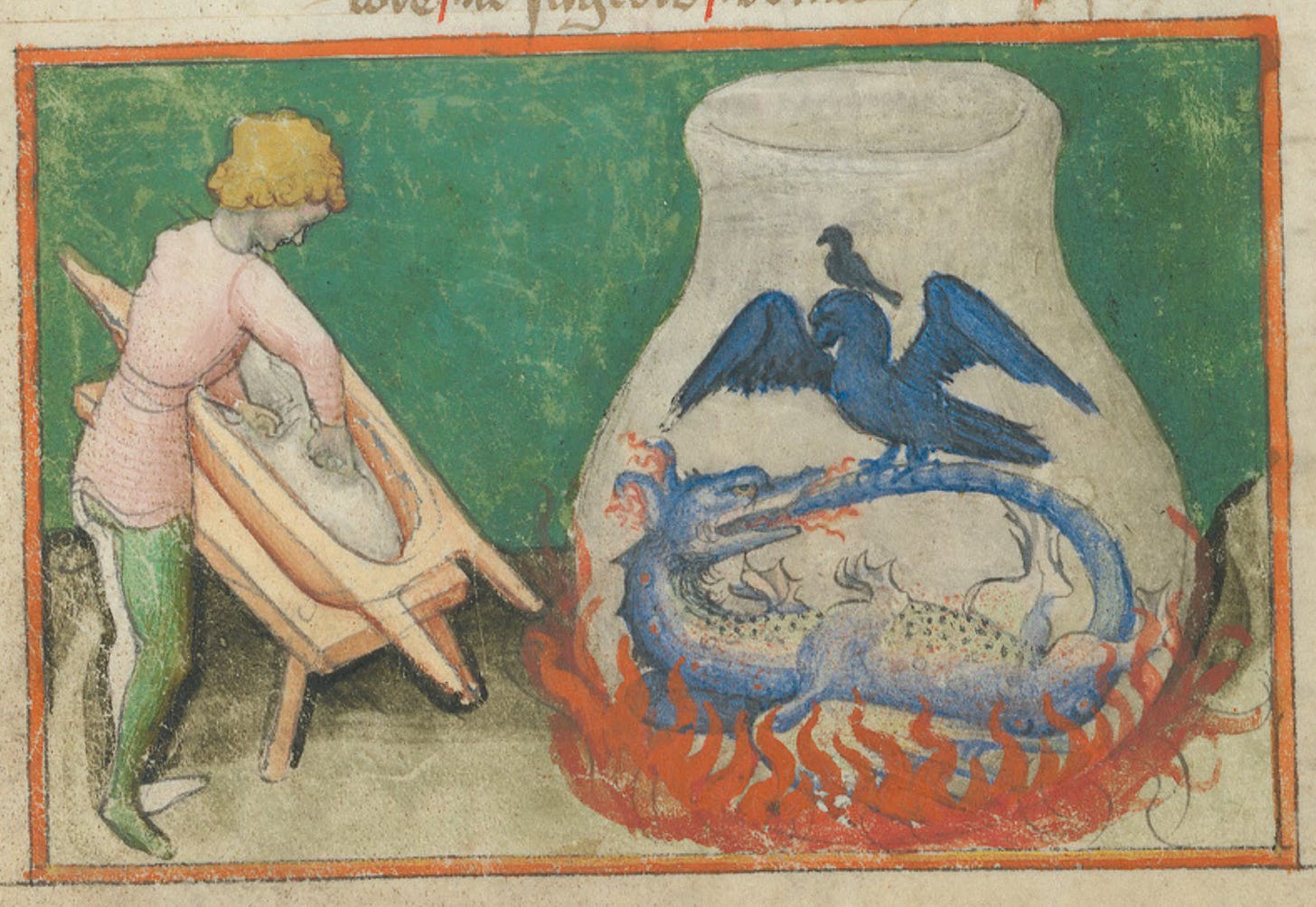
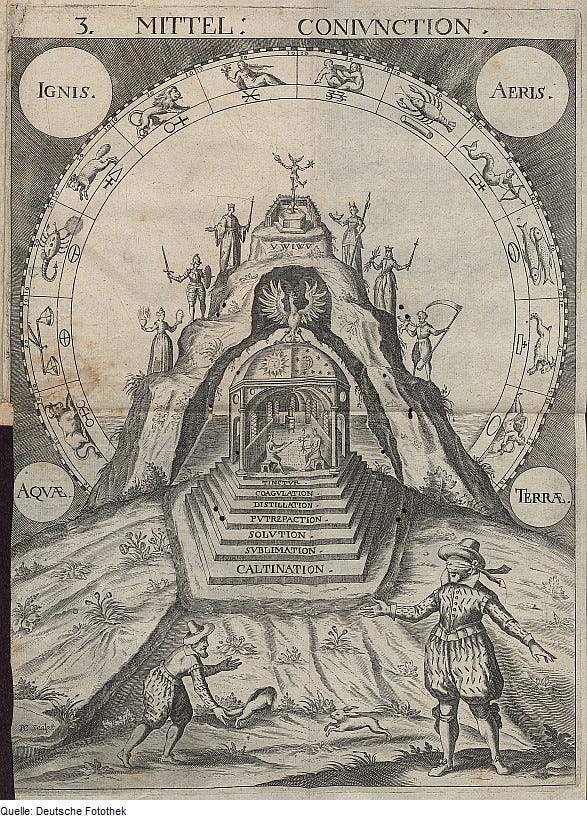
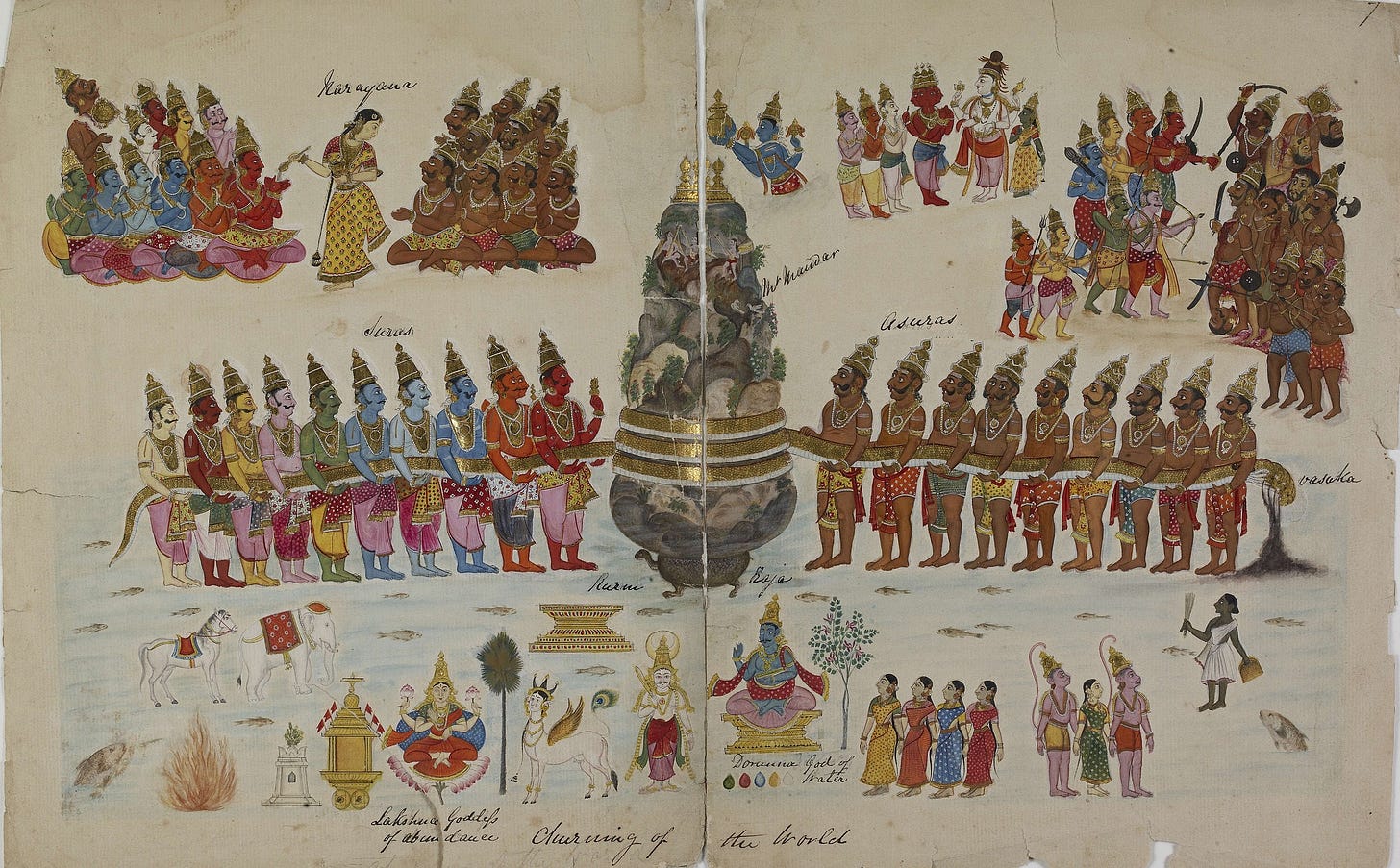
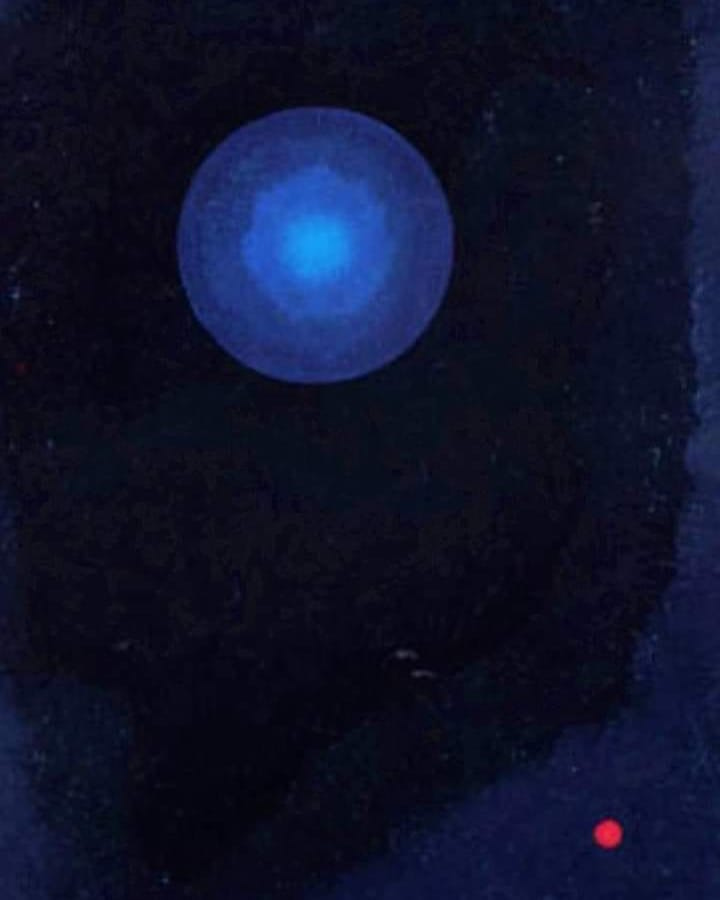
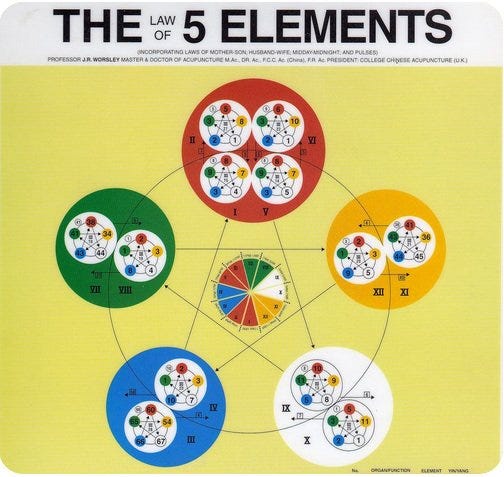


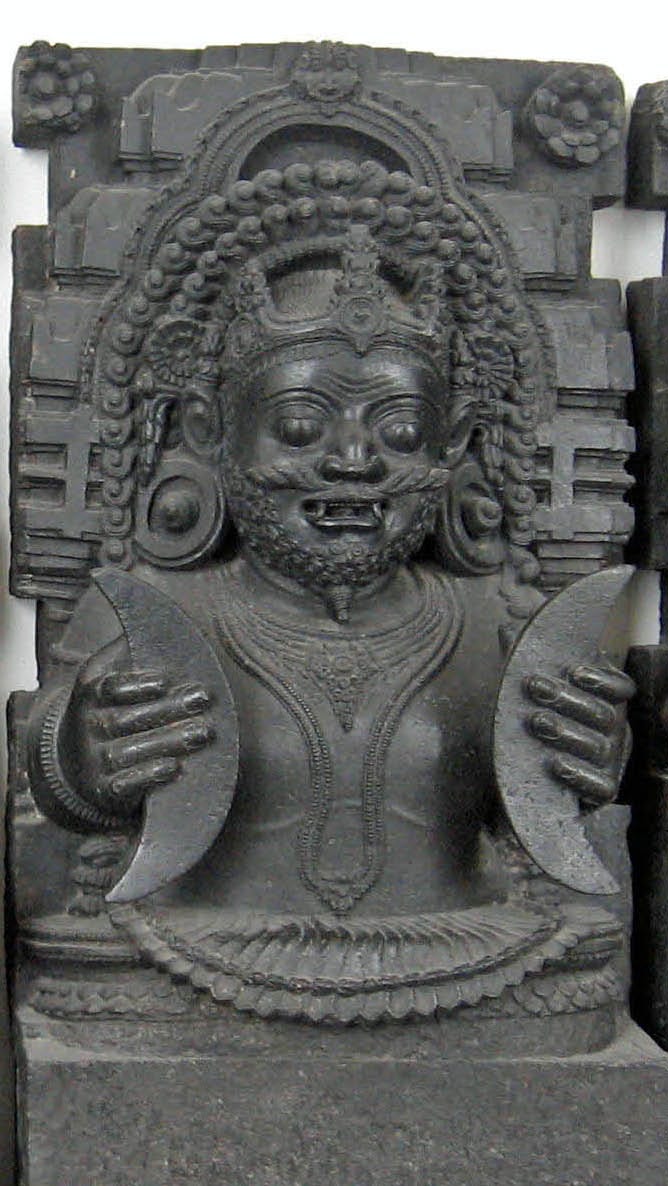
Hello there Neeshee, your posts have been coming up on my feed, and they’re quite interesting!
I’ve been on here 3 weeks now, and I’m trying to connect with others.
So I suppose this is my introduction!, with an article of mine you may enjoy:
https://open.substack.com/pub/jordannuttall/p/an-introduction-to-alchemy?r=4f55i2&utm_medium=ios